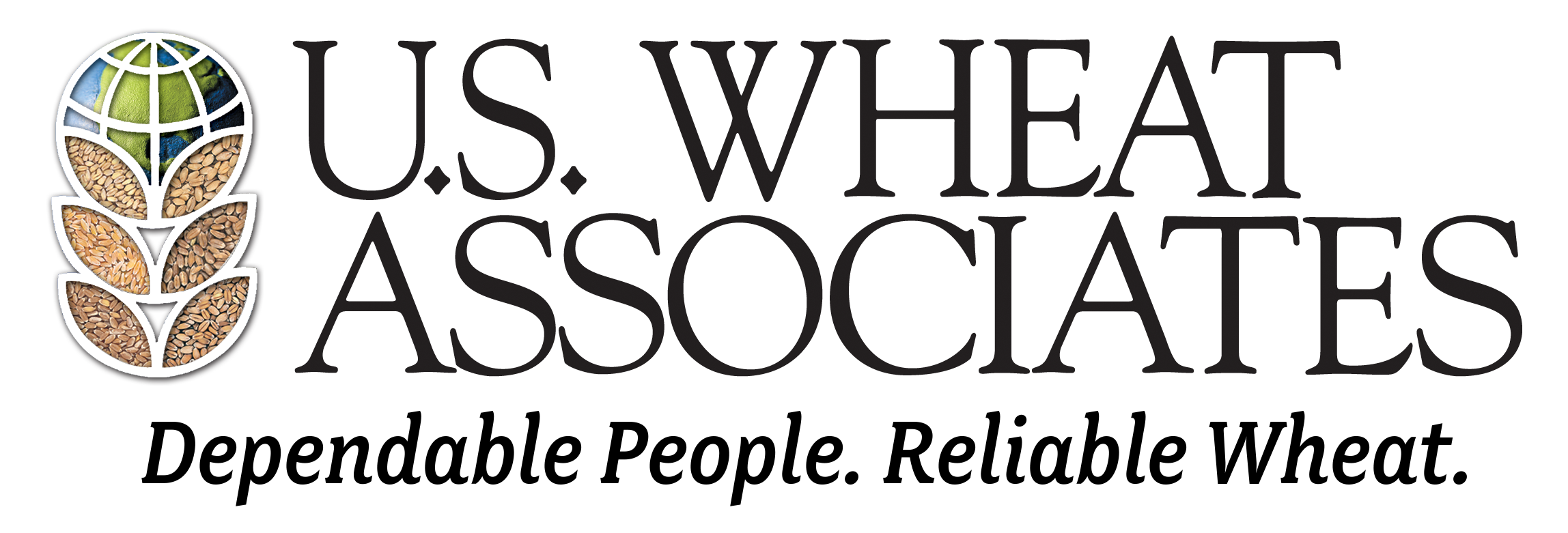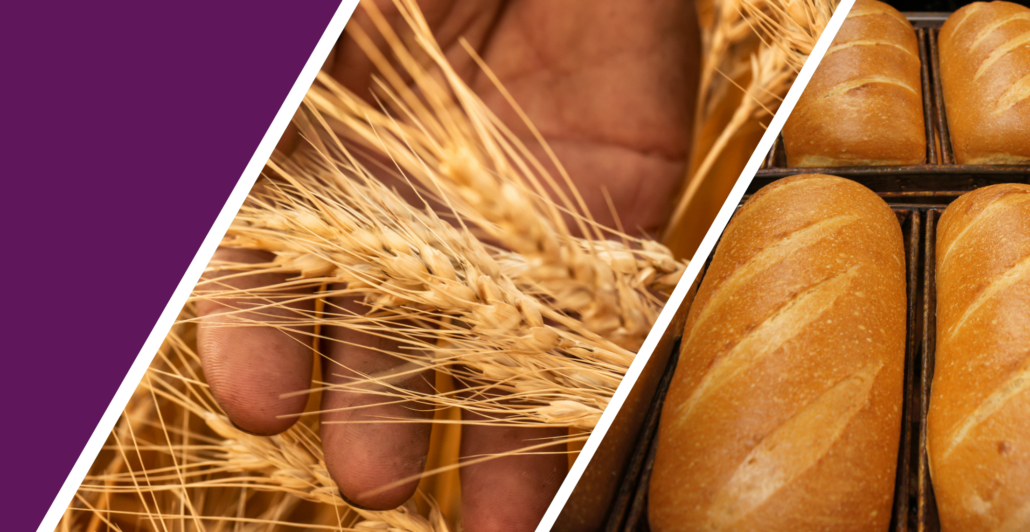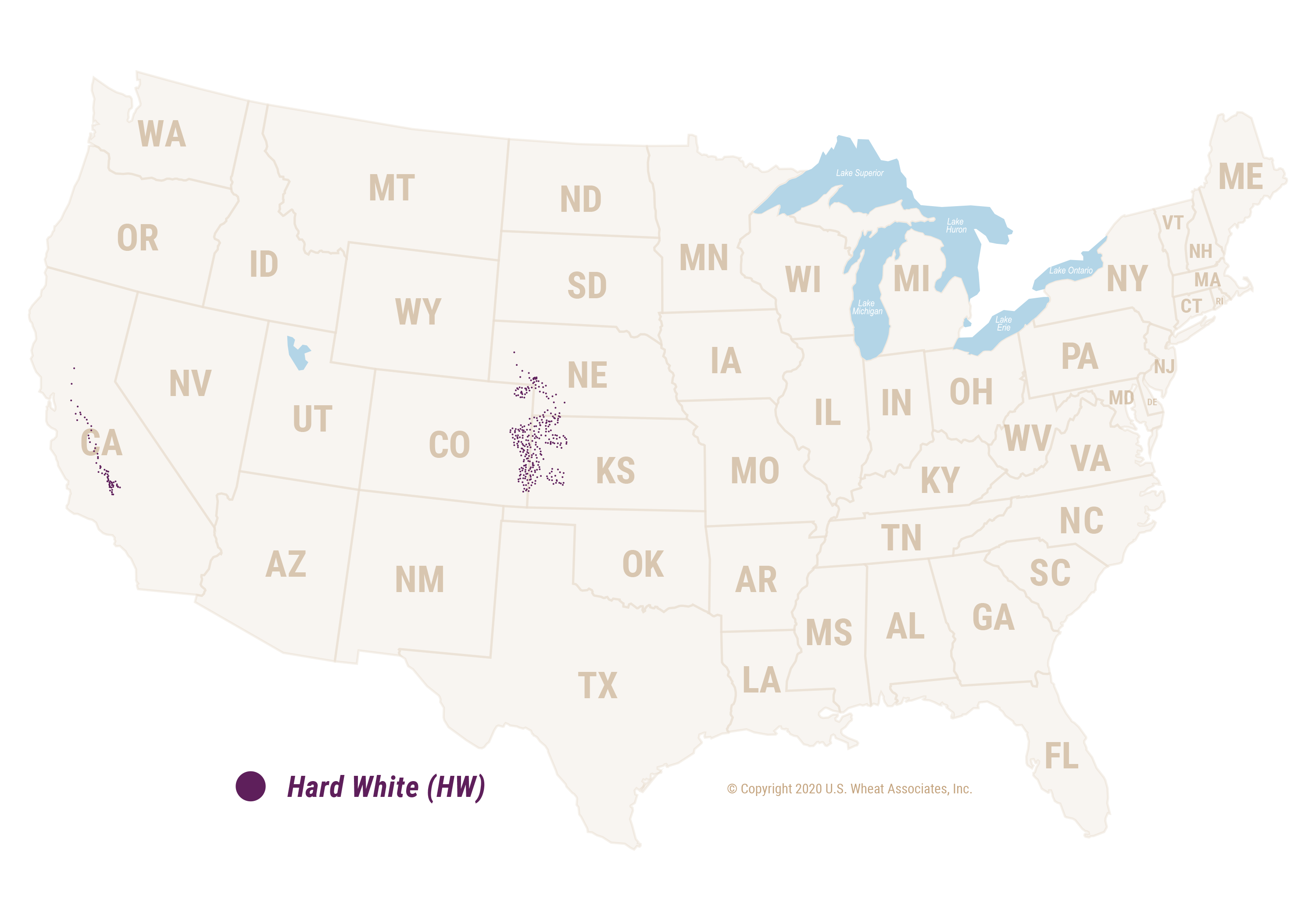U.S. hard white (HW) wheat receives enthusiastic reviews when used for Asian noodles, whole wheat or high extraction applications, pan breads or flat breads. It has a hard endosperm, white bran and a medium to high protein content of 10.0% to 14.0% (12% mb). HW includes winter and spring varieties increasing the protein range and functionality within the class.
For the miller, HW delivers whiter flour at higher extraction levels due to its lighter bran color. HW is a true hard wheat creating excellent granulation, maximizing coarse semolina production and low ash flour.
For the baker, the greatest advantage of HW wheat flour is the whiter end product color. Higher extraction rates generally improve water absorption. Using ultra fine, white whole wheat flour, whole wheat bread can be produced with the color and texture of traditional bread. HW wheat flour is also lower in polyphenol oxidase (PPO), an enzyme that can cause dough browning. Lower PPO content improves the color of wet noodles and Asian steamed bread products.
Where is U.S. Hard White grown?
The newest and the smallest class of wheat in the United States, HW is grown in the Central Plains, Montana, Idaho and California, and, when available for export, shipped via Pacific and Gulf ports.
Please select your preferred language, report, and year, and click View Reports.
2023 U.S. Hard White Production
According to USDA’s Small Grains Annual Summary released September 29, 2023, production of the 2023 U.S. HW crop is estimated to be 0.6 million metric tons (MMT), a 32% increase from last year’s 0.5 MMT and equal to the 5-year average.
- 2023 (MMT)
- Total HW production in states sampled*
- PNW-exportable subtotal
- Southern Plains-exportable subtotal
- Total U.S. HW Production
- 2023 (MMT)
- 0.6
- 0.3
- 0.4
- 0.6
- 2022 (MMT)
- 0.5
- 0.2
- 0.3
- 0.5
- 5-Year Average (MMT)
- 0.6
- 0.2
- 0.4
- 0.7
*States sampled: California, Colorado, Idaho, Kansas and Nebraska. Numbers may not match exactly due to rounding.



